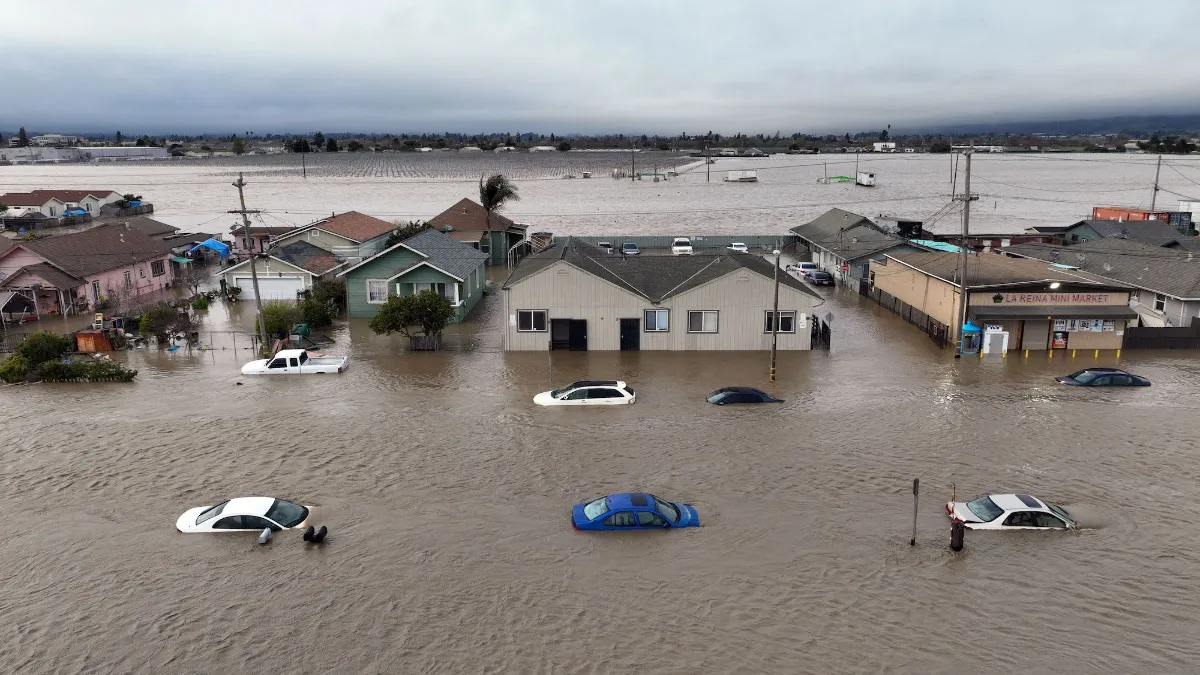
Advertisement
Nestled on the Southern California coastline, San Diego is renowned for its idyllic weather, characterized by mild temperatures, abundant sunshine, and a Mediterranean climate. However, recent unprecedented flooding has raised questions about the city’s vulnerability to extreme weather events. This article aims to explore the typical weather patterns of San Diego and delve into historical instances of flooding, shedding light on the city’s resilience in the face of rare weather challenges.
The Usual Weather in San Diego:
- Mediterranean Climate:
- San Diego is blessed with a Mediterranean climate, featuring mild, wet winters and warm, dry summers. Residents and visitors alike enjoy an average of 266 sunny days annually, making it a coveted destination for those seeking pleasant weather year-round.
- Temperature Ranges:
- Daytime temperatures typically range from the mid-60s to the mid-70s Fahrenheit (18-24°C) during the winter months, while summer temperatures soar into the mid-70s to mid-80s (24-29°C). San Diego’s coastal location mitigates temperature extremes, providing a comfortable climate.
- Limited Rainfall:
- Rainfall is a rarity in San Diego, particularly during the summer. Most precipitation occurs between November and March, with an average annual rainfall of around 10 inches. The arid climate contributes to the city’s reputation as a haven for outdoor activities.
Unusual Flooding Events:
- Rare Flooding Incidents:
- San Diego’s Mediterranean climate generally shields it from severe weather events, and flooding is considered a rare occurrence. The city is not traditionally prone to floods, with its topography and drainage systems designed to handle limited rainfall.
- Historical Perspective:
- Instances of significant flooding in San Diego are infrequent, but they have occurred. One notable event was in January 2010 when heavy rains triggered flash floods and landslides, causing disruptions across the region. However, such events are exceptions rather than the rule.
Recent Thousand-Year Storm:
- Unprecedented Rainfall:
- The recent flooding in San Diego, attributed to a “thousand-year storm,” took the city by surprise. This extreme weather event resulted in more than a month’s worth of rain in a single day, causing widespread floods, mudslides, and emergency rescues.
- State of Emergency:
- The severity of the recent storm led to a state of emergency declaration, underscoring the unusual nature of the weather event. San Diego Mayor Todd Gloria described the damage as “absolutely devastating,” emphasizing the unprecedented amount of rainfall.
Moving Forward:
- Climate Resilience:
- As San Diego navigates the aftermath of this rare weather event, the focus shifts to climate resilience and preparedness. City officials and residents alike will likely reevaluate infrastructure and emergency response strategies to adapt to the changing climate patterns.
- Learning from Rare Events:
- While flooding in San Diego remains an anomaly, the recent storm serves as a crucial reminder that climate-related events can defy historical norms. Learning from these rare occurrences will be pivotal in enhancing the city’s ability to respond to future challenges.
San Diego’s typical weather is the envy of many, with its mild, Mediterranean climate creating an ideal living environment. The recent flooding, however, highlights the importance of acknowledging the changing climate landscape. As the city addresses the aftermath of the “thousand-year storm,” it reinforces the need for communities to adapt, prepare, and build resilience in the face of unpredictable weather events.
